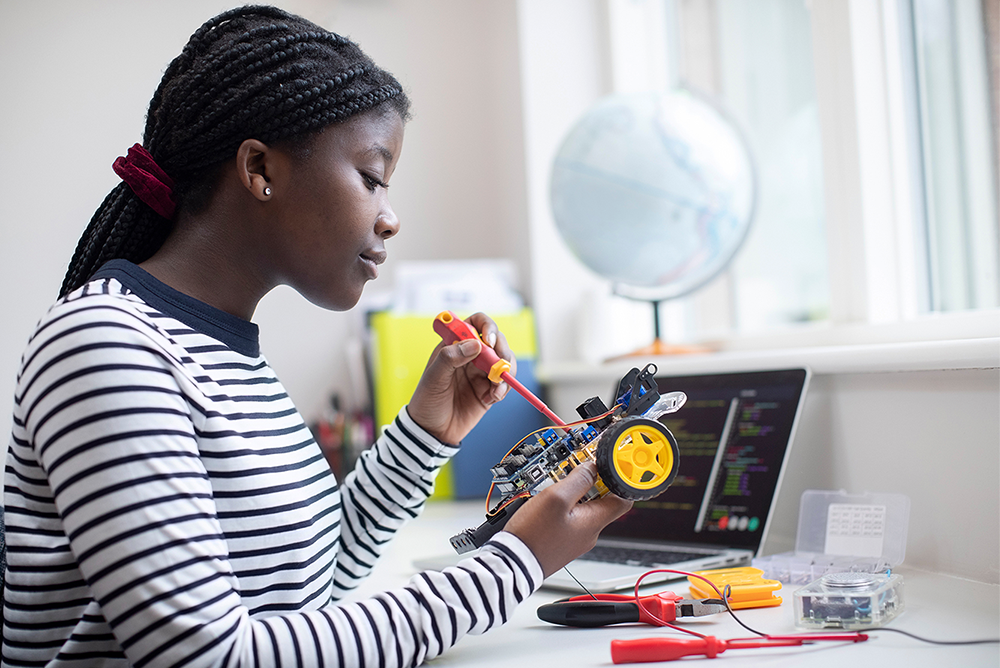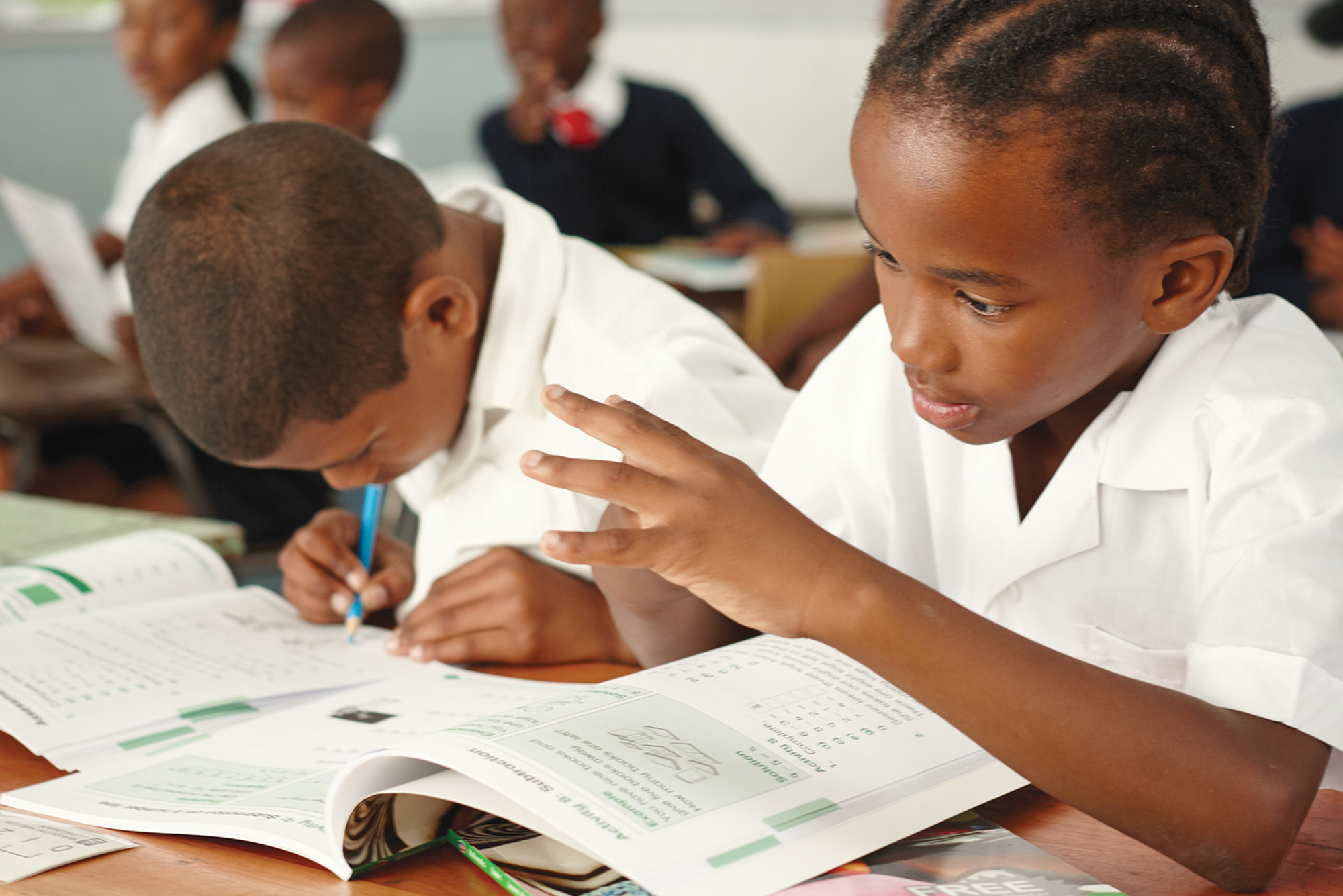In February, the Department of Basic Education confirmed that it would officially get going with the introduction of Coding and Robotics in South African schools. As it awaits feedback from the regulator on the proposed curriculum, Dr Benadette Aineamani, Director of Product & Services at global education group, Pearson Africa believes that aspects such as the link between Mathematics and Coding and Robotics, and the role of language in teaching and learning, need to be considered before South Africa’s schools are ready for such a technically advanced subject.
Is South African education ready to excel at coding and robotics?

Having dedicated her life to understanding how teaching can be most effective, Aineamani says, “there is a need to unpack the pedagogical content knowledge that is required to teach Coding and Robotics at different phases in the schooling system.
Similar to doing Mathematics, Coding and Robotics requires learners to make sense of the challenge that is presented to them and persist to solve the problem. Concepts that are taught in Mathematics an such as algorithmic and computational thinking are also required when doing Coding and Robotics. Therefore, effective pedagogies need to be used when teaching Coding and Robotics to ensure that learners are provided with the opportunities to develop the required concepts and skills that will enable them to progress in the subject.
Part of the challenges in teaching and learning subjects such as Mathematics and Science in South Africa comes down to the language aspect. Language complexities in South African multilingual classrooms have been well researched and various recommendations have been suggested by experts in the field. Famed educationalist, Dr James Cummins is a Professor with the department of Curriculum, Teaching, and Learning at the University of Toronto once said, “To reject a child’s language in school is to reject the child”.
In South Africa, Aineamani says that many children in Grade R-3 come to school with a language that they have already developed at home. “This is the language that they have been using to communicate, this may be not be the same as the language of teaching and learning. The school system should embrace the learner’s language that is already developed and use it as a resource to help the learner understand concepts and skills that are taught in the language of teaching and learning.”
Due to the technical nature of Coding and Robotics, Aineamani says Coding and Robotics should also be taught in a way that allows learners’ mother tongues to be used as a resource to develop the skills and concepts in the subject. “For this to be successful, a conscious effort should be made to develop an effective register for Coding and Robotics in all the official languages. This will then enable teachers and learners to have a vocabulary available to them when using any language as a resource to teach or learn concepts and skills in Coding and Robotics.”
In her role at Pearson, Aineamani believes that the starting point is to create awareness of the complexities of language, and the importance of using language as a resource in teaching and learning. “Through various engagements with teachers, we highlight the complexities of language in multilingual classrooms, and provide some tips on how teachers can use language effectively as a resource rather than a limitation in teaching and learning.”
In developing its materials, Aineamani says Pearson has put measures in place to ensure that the teaching and learning materials are accessible to multilingual learners and teachers through careful use of terms, and drawing on appropriate contexts to illustrate concepts, and developing translations where possible. In cases where translations are not possible, original content is developed within the context of various languages instead of direct copies that become lost in translation.
“As South Africa introduces Coding and Robotics in Schools, there is a need to acknowledge the challenges that have been extensively researched in the teaching and learning of Mathematics and Science. Due to the link between Mathematics, Science and Coding and Robotics, these challenges can be used to inform decisions that need to be taken in order to successfully implement the subject,” concludes Aineamani.
Teaching mathematics is more than the sum of its parts
Benadette Aineamani, Director of Products and Services for Pearson Africa was interviewed on Channel Africa by Zikhona Miso. Aineamani discussed some reasons for the decline in mathematics performance in South Africa, and why mathematics is important. Through her research, and in writing her PhD thesis on the subject, Aineamani investigated the role of the teacher in developing learners’ mathematics discourse and understanding. She offers a few solutions around teacher and learner competency and tips for improving mathematics teaching and learning.

Coding. Robotics. Artificial Intelligence. Data analytics. These are just some of the words that might flash in the mind of a young high school learner as they dream of their future career. In this fourth industrial revolution, the digital age has flung wide the doors of possibility. For many young South Africans, these doors remain shut tight as their inability to pass mathematics holds them back.
According to Benadette Aineamani, Director of Products and Services for Africa at Pearson, the state of mathematics education in South Africa is declining. In 2019, only 54% of matriculants who wrote a mathematics exam passed it. This is down from a pass rate of 58% in 2018. Adding to this, only 2% of the 2019 mathematics passes were distinctions.
Aineamani explains, “The way that mathematics as a subject is scaffolded means that learners need to progress from one concept to another. If they don’t grasp a concept, they are then left behind with little hope of catching up on their own. So they fail.”
Aineamani believes too many of our learners are already one or two grades behind. “With the time lost to the COVID-19 lockdown, the South African education system is in dire need of helping its learners to catch up if they ever hope to qualify for admission into higher education. Mathematics is so important, and every year it becomes more so,” she says.
Through her research, and in writing her PhD thesis on the subject, Aineamani investigated the role of the teacher in developing learners’ mathematics discourse and understanding – the topic of her thesis.
“There is an issue around teacher and learner competency in mathematics and most of it comes down to teaching mathematics with and for understanding. If a learner doesn’t understand mathematics, then the teacher will need to draw on various strategies in order to help the learner to grasp concepts in a way that leads to conceptual understanding.”
Through Pearson, Aineamani uses her knowledge of mathematics teaching and learning to provide much-needed training for teachers and schools across the country. In her extensive research, she has discovered three critical problem areas that may be taken for granted, but are a reality in many mathematics classrooms.
Begin with the intended object of learning
In all the hundreds of lessons that she observed in doing her research and training teachers, the biggest issue seems to be one that takes place right at the beginning of every lesson.
“I have seen so many teachers walk into a classroom, open the textbook and just start teaching. And they do this without actually introducing the lesson objectives. With no context, the learners struggle to focus and generally don’t understand what is being conveyed to them. It is not easy to believe this but it is the reality on the ground.”
Aineamani believes that lesson preparation is crucial, and lessons should be taught in relation to the learners’ prior knowledge.
She says that all lessons should begin with an announcement of the intended object of learning to avoid confusion on what learners need to focus on and what they need to ignore. She says there is a need to make mathematics teachers aware of the impact of starting a lesson without announcing their intention(s). In a discovery lesson, the teacher should find an appropriate way of ensuring that the intended object of learning is embedded in the discovery activity and hence kept in focus during the lesson,” says Aineamani.
The power of examples is found in translation
Aineamani says that teachers should embrace the power of examples and what they bring into the classroom. She says, “Teachers should not just open a text book and start going through the examples written in the text book, without considering the learners and their realities in relation to the prior knowledge that is needed to engage with the examples in the textbook.”
According to her, some of the examples provided in some text books often do not engage the learners exhaustively. “Teachers should use all available resources to customise examples for their learners and translate that knowledge in a way that their learners will understand.”
Many voices in the mathematics classroom
“If you are a teacher in a mathematics classroom, are you the only voice in the room?” questions Aineamani. “If you are the only voice that is heard in the classroom and provide absolute authority, are you really allowing learners to engage in a subject in a way that they understand?”
Part of the problem Aineamani has discovered in our mathematics classrooms is the use of the teaching method which she calls ‘presentation mode’. “Mathematics teachers need to engage with their learners and allow learners to communicate their mathematics reasoning. Let the learners get the answer wrong and then guide them by drawing on their prior knowledge and experiences, to assist them to ‘see’ why their answer is wrong.”
An educator on a mission
With a passionate history for education, Aineamani has dedicated her life to improving education at a school level. Through Pearson, she has been working with educators in different provinces in South Africa to find ways of identifying and helping schools improve their mathematics competencies.
“With so much school time already lost to COVID-19, we now have an even more desperate need to develop targeted interventions that will help our teachers and our learners to catch up. This is our mission at Pearson and one that we hope schools across the country will take us up on” says Aineamani.
